Hnin Htet Htet Aung studies the surge in support for refugees by overseas Myanmar youth.
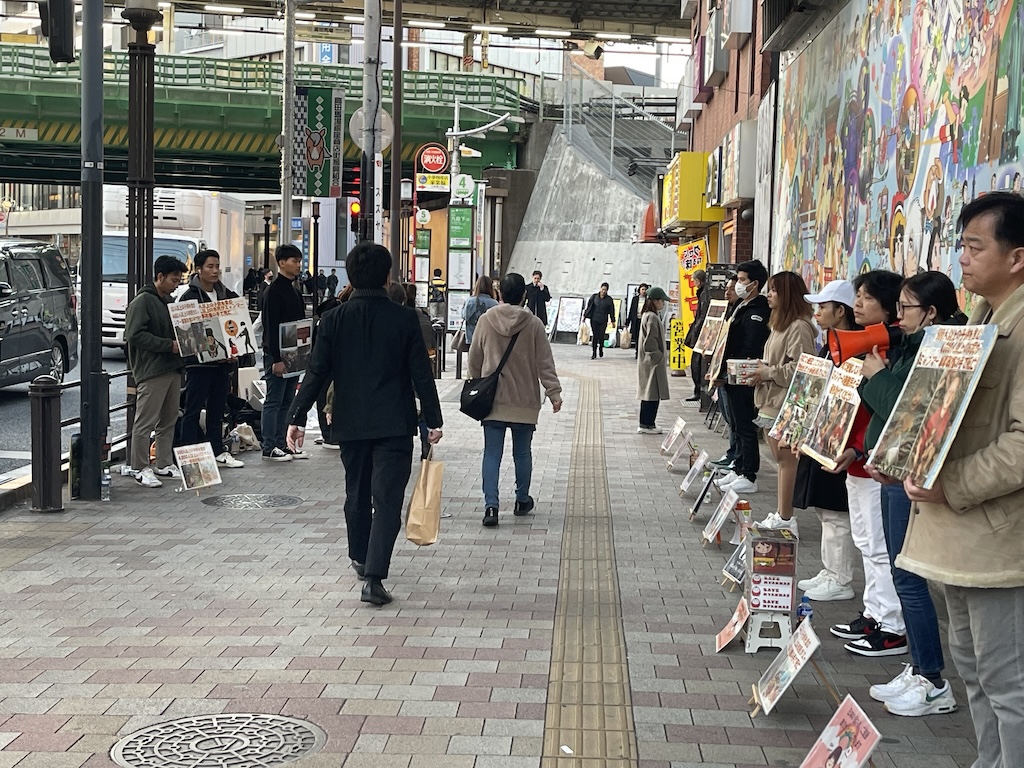
This article describes how the refugees in all 14 States and Regions of Myanmar face challenges in health, food supply, and lodging—in addition to their struggle for the development of education and knowledge sharing for the new generation of refugees in the post-coup period.
Furthermore, although humanitarian aid for the displaced refugees is critical, this article explores the barriers faced by supervisors managing refugee camps that host hundreds of people without adequate support. The goal is to share this research with the relevant entities overseeing welfare and humanitarian assistance for internally displaced persons (IDPs) and the Myanmar diaspora.
Information for this article was collected from reports by international organizations, news articles, primary data research, as well as from online interviews with women committee members from one of the Palaw Township refugee camps. News on the fundraising campaigns and awareness campaigns for refugees made by Tanintharyi Youth residing in Japan are also included. (Only pseudonyms of the interviewees are mentioned due to Myanmar’s current political situation and security reasons.)
The year 2020 and beyond are the times when every nation in the world faces a crisis. While countries have encountered drastic challenges in various social, economic, health and political sectors due to the worldwide COVID-19 pandemic, certain countries like Myanmar, Afghanistan, Somalia, Syria and Yemen have the added impact of civil war to their troubles. Although the severity and duration of the conflicts may vary, these encounters have had a tangible impact on the more vulnerable sectors of society—creating more refugees, mortality, and humanitarian constraints.
On February 1st, 2021, dictators in Myanmar orchestrated a military coup, preventing any further steps towards the democratic transition with the scheduled resumption of a Parliament with the 2020 elections results. February 1, 2024, will mark the second anniversary of the country-wide people’s revolution against the unfair military coup. Among the revolutionary people during this period, 2,700 lives have been sacrificed and more than 17,000 persons have been unlawfully detained—as stated in Assistance Association for Political Prisoners (AAPP) reports. The number of refugees has also increased gradually at the same time. According to data from the United Nations High Commissioner for Refugees Office (UNHCR), the number of refugees listed in July 2023 reached 1,927,200. Civil war-torn Myanmar and the term “refugee” veco-existed for more than 70 years as the increasing number of refugees caused by the renewed military coup has been documented by research from international organizations, local research institutes, and civil society organizations.
According to the 2023 report of the International Displacement Monitoring Centre (IDMC), in 2022, Myanmar was seen as 1 of 5 countries with the highest figures of displaced persons as shown in image 1 (below). Moreover, due to the intensifying conflicts in Myanmar, there are approximately 1 million displaced persons countrywide in all 14 States and Regions. Compared to the period before the coup, the numbers have increased twofold.
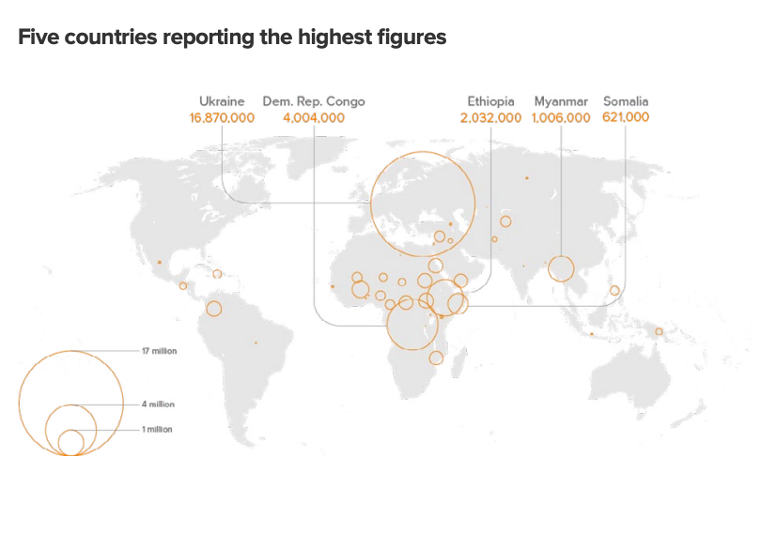
As mentioned above, people from some areas of Myanmar’s States and Regions have already taken shelter at the refugee camps even before the 2021 military coup. In the post-coup period, refugees emerged in certain areas, and Tanintharyi Region was one of them. The statement dated 30th September 2021, released by the United Nations Office for the Coordination of Humanitarian Affairs (UNOCHA) did not mention refugees in the Tanintharyi Region as seen in Image 2 (below).
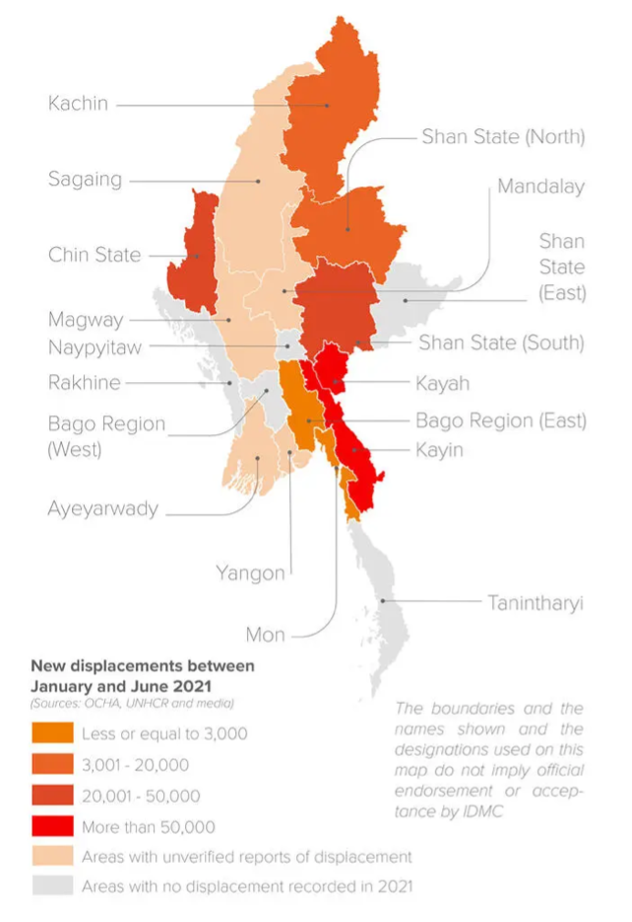
Furthermore, the statement released by the UNHCR on 6th March 2023 indicated that a total number of 43,000 refugees emerged from Tanintharyi Region since the military coup on 1st February 2021 until 2023—and many are still trying to escape or at the hideouts. Countrywide, 1,375,900 people have been displaced.
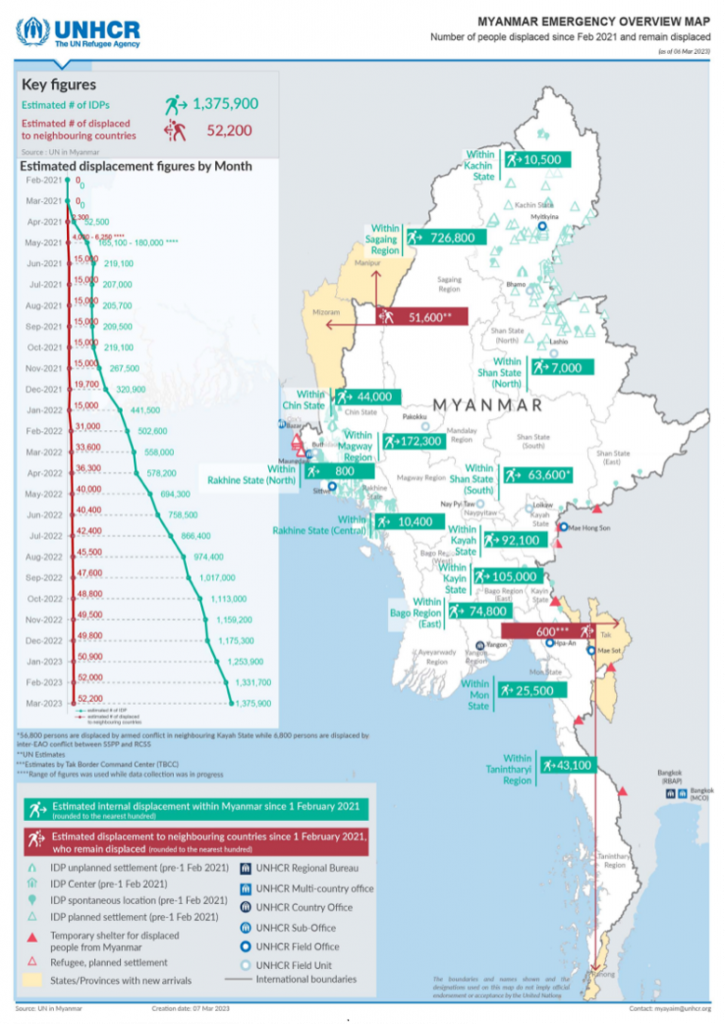
Despite the endurance of a 70 year-long civil war, a new generation of refugees are present in the towns and villages of central Myanmar, including in Palaw Township in Tanintharyi Region since the 2021 military coup. Palaw is a township in the Myeik District of Tanintharyi Region, with a population of 39,244 and 117,920 in the villages. The demographic data was collected at the end of September 2019 under the National League for Democracy (NLD) government and is evident on the website of the Ministry of the Union Government. There have been no updates to this data by the State Administration Council since the 2021 military coup. As mentioned earlier, a new generation of refugees is on the rise in the post-coup period—and the numbers appear to be increasing as the revolution goes on.
The humanitarian situation in Myanmar after 2021 was exacerbated by intensified violence, with heavy artillery by the military forces in towns and villages. With parallel constraints caused by the COVID-19 pandemic in addition to the military coup, aid organizations and staff carrying out the humanitarian assistance faced serious challenges due to unreasonable prohibitions by the military. Myanmar’s grave situation of humanitarian assistance has received attention from international organizations such as the UN and the World Bank, who have examined the situation with new analytical data.
When it comes to discussing the issue of humanitarian assistance, it is not only the concern of organizations and the staff carrying out hands-on assistance but also a situation that requires consideration of the supervisory committee members. Committee members are struggling to take responsibility for healthcare and education matters, in addition to fulfilling food supply for refugees in camps. From an interview with Ma Pann in January 2023, they note that committee members who supervised refugee camps consisted of those who had fled to free zones after 1988—a position that resulted from their own experience staying alive throughout hardship.
As for humanitarian aid, it is reported that the World Food Program (WFP) has sent rice supplies, but the Myanmar military has not provided any assistance whatsoever. Since there are CDM teachers and students among the refugees, efforts have been made to provide uninterrupted education to children refugees. Ethnic curricula and those compiled by the National Unity Government (NUG) are taken as references in teaching the curriculum.
Committee members are also responsible for managing healthcare and related issues in the camps. With the help of CDM medical practitioners, committee members have been able to provide medical services to refugees in the camps by soliciting donations for medicine and funds within their network. Some prescription medicines such as quinine are provided by the National Unity Government (NUG). Moreover, continuous human rights trainings on child and women’s rights are conducted by the committee members who have experience working at International Non-Government Organizations (INGOs). One of the camp managers, Ma Di, shared that mental health trainings are conducted for the refugees to alleviate their feelings of depression, despair, and insignificance as a result of forced displacement.
In 24th April 2021, the Five Points Consensus agreed upon by the leaders of 9 ASEAN Member States and Junta Chief, Min Aung Hlaing lists points 1 & 4: stating the need for an immediate cessation of violence, and the provision of humanitarian assistance by ASEAN through the ASEAN Coordinating Centre for Humanitarian Assistance on Disaster Management (AHA Centre). However, people who revolt against the military coup are still tortured violently and killed extensively throughout the country, including in Tanintharyi Region. Research by a local research institute, Southern Monitor, in February 2023 reported the violent incineration of 200 residences by the junta forces. As shown in Image 4, Palaw is a township with many violent incidents in Tanintharyi Region. According to the Southern Monitor’s research report, Myanmar junta forces attacked with rocket launchers to Tanshin village of PalawTownship killing a 65 year-old woman and injuring a child.
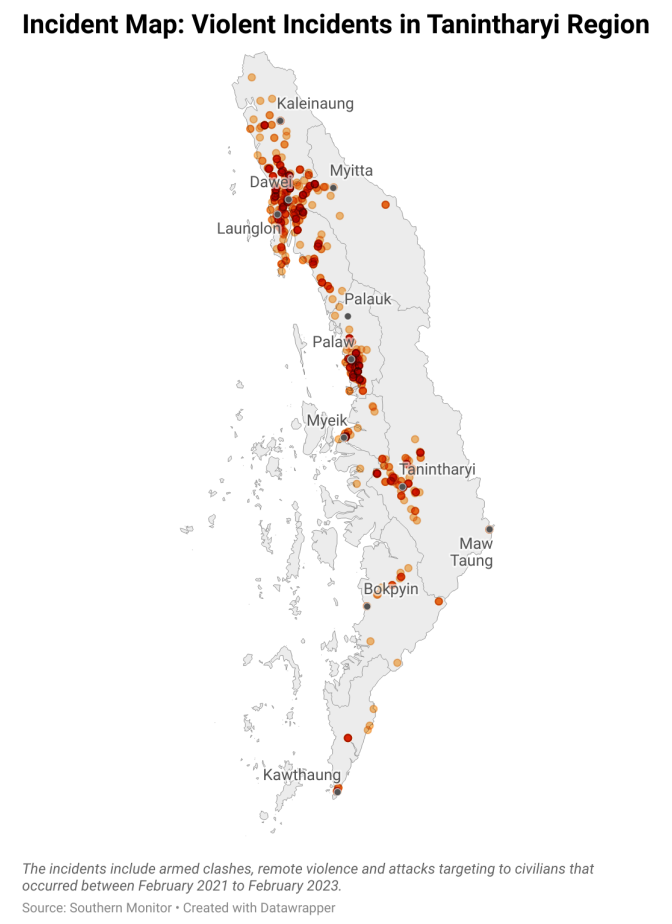
At the same time, ASEAN Leaders’ review of the Myanmar military’s implementation of Myanmar-ASEAN Five Point Consensus was issued on 5th September 2023. It strongly condemned the continuous acts of violence in Myanmar which caused a humanitarian crisis and the destruction of public facilities. The review also stated the decisions made at the 40th and 41st ASEAN Summit Meeting, that ASEAN will continue to uphold the decision to allow Myanmar only non-political representation at the ASEAN Summit Meeting and ASEAN Foreign Ministers’ Meeting. Based on these findings, it is uncertain whether Myanmar’s military junta will actually deliver humanitarian aid. Given these outcomes, International Organizations including the UN should seriously consider the feasibility of refugees receiving any humanitarian assistance that is transferred through the hands of Myanmar military forces.
Generally, the role of people in the diaspora from authoritarian states plays a crucial role in achieving democracy and justice. The tasks carried out by overseas Myanmar activists, such as disseminating information from the country under the dictatorship and seeking help from international governments and organizations on behalf of oppressed local people in their homeland who endure internet and electricity shortages and constraints on social media platforms, are a great source of resistance to the military dictators and an important show of democratic movements. For example, the initiatives of the regional uprising during the Arab Spring mobilized the important and extensive participation of activist diasporas from Syria, Libya and Yemen.
In the context of Myanmar, the role of the Myanmar diaspora as a source of support and aid for the refugees is also crucial. The natives of Palaw township who reside in Japan include democratic Myanmar diaspora groups dispersed around the world, sharing in the burden of helping resilient people in Myanmar fight against the dictators in their own way.
Due to the constraints in conveying timely information to the relevant external and internal entities and institutions, the remote location of refugee camps has created challenges in accessing humanitarian assistance. Diasporic Palaw youth in Japan, Thailand, Singapore, and Malaysia united to raise funds by explaining Myanmar’s situation to the people of the host country by holding posters or distributing flyers at the train stations to oppose the dictators. (Ko Thant Zin-Interview, Tokyo, Japan, October 2023)
On the other hand, diasporic youths are also grappling with moving their family members in Myanmar to a safe zone for security reasons. However, by sharing campaign news and images on social media after each campaign, the youths still managed to encourage fellow IDPs to taking refuge in safe zones. (Ma Chan Myae – interview- Tokyo, Japan, October 2023)
In the same way as the refugees in Palaw camps, there will be many innocent people elsewhere in the country who love justice but who continue to face retaliation from the junta with brutal massacres and destruction of their facilities, including limited access to humanitarian aid. Although the Guiding Principles on Internal Displacement issued in 1988 states that people should not be displaced because of the violation of basic human rights to life, dignity, freedom and security, people from all parts of Myanmar—including those from Palaw township—continue to face harrowing impacts from the destruction of their property and lives by the Myanmar military junta. Therefore, considering all the factors mentioned above, the UN organizations and the international humanitarian assistance institutions should seriously consider whether it is appropriate to transfer humanitarian aid to people in need through the Myanmar military junta.
Hnin Htet Htet Aung is working as a research assistant at the Institute for Global Governance of Hitotsubashi University in Japan.
Like This Article
March 27, 2025
March 21, 2025
Lorem ipsum dolor sit amet, consectetur adipiscing elit. Ut elit tellus, luctus nec ullamcorper mattis, pulvinar dapibus leo.